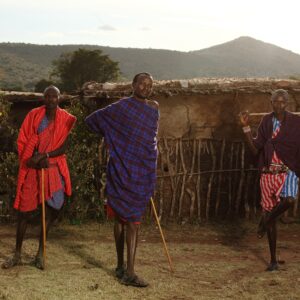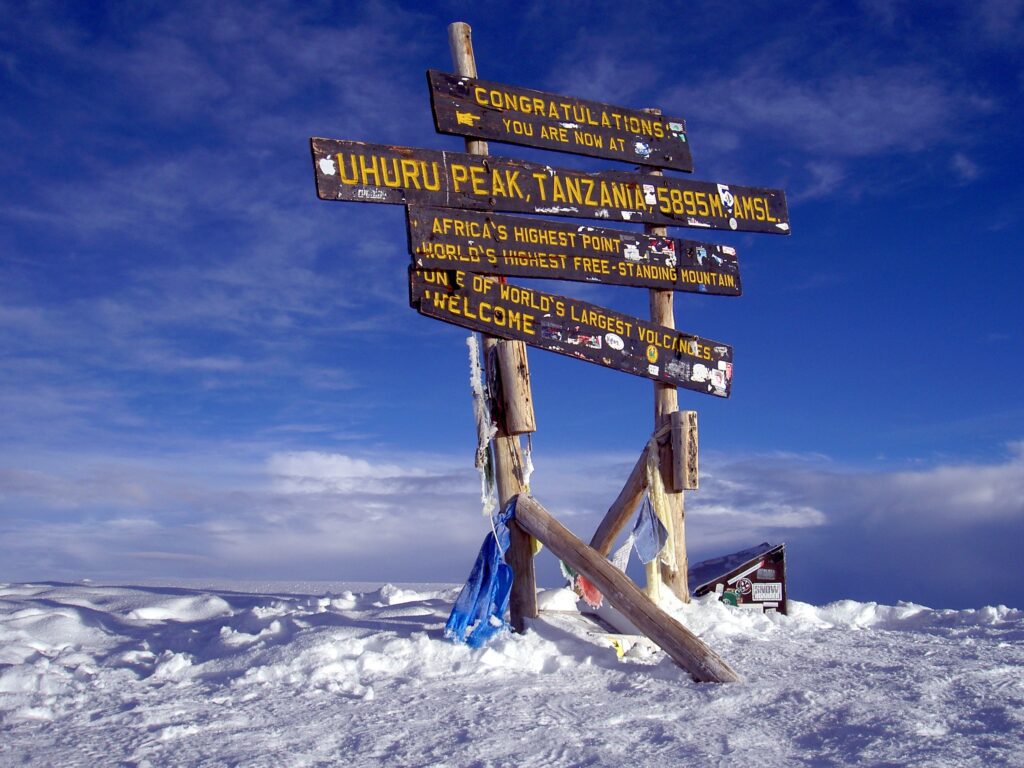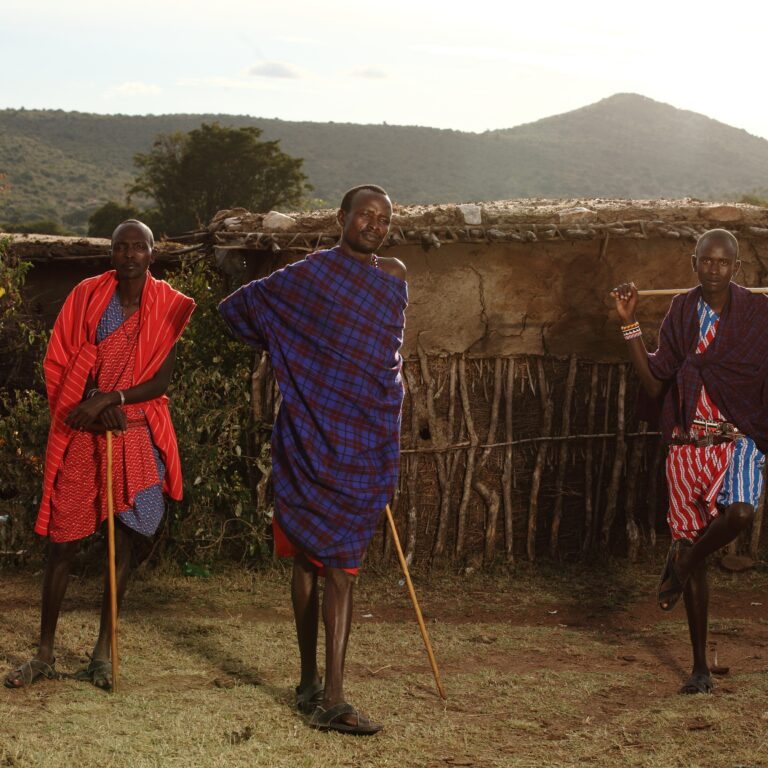Mount Kilimanjaro is one of the world’s most iconic mountains, renowned for its impressive stature, breathtaking scenery, and legendary challenges Mount Kilimanjaro Height. Towering high above the African plains, Kilimanjaro’s height has been a focal point of exploration and fascination for adventurers and scientists alike. In this detailed article, we explore the established and new height measurements, compare them to other summits, and break down key facts about its elevation and prominence. Mount Kilimanjaro climbing tours (/ˌkɪlɪmənˈdʒɑːroʊ/) is a massive dormant volcano in Tanzania. It is the highest mountain in Africa and the highest free-standing mountain above sea level in the world, situated at 5,895 m (19,341 ft) above sea level and 4,900 m (16,100 ft) above its plateau base.
Elevation: 5,895 m
First ascenders: Ludwig Purtscheller, Hans Meyer
Mountain range: Eastern Rift mountains
First ascent: October 1889
Prominence: 5,885 m
Established Mount Kilimanjaro Height
For decades, the widely accepted height of Mount Kilimanjaro has been 5,895 meters (19,341 feet) above sea level. This figure was determined using traditional surveying techniques during the colonial era and later confirmed by more advanced geodetic surveys. The height is based on Kilimanjaro’s highest point, Uhuru Peak, located on the Kibo volcanic cone.
The recognition of this height has cemented Kilimanjaro as Africa’s tallest mountain and one of the most celebrated landmarks on the continent Kilimanjaro Summit.
New Height for Mount Kilimanjaro
Recent advancements in satellite technology and geodetic tools have allowed for more precise measurements of Kilimanjaro’s height. In some newer studies, slight variations in the official height have been noted. Modern surveys using GPS technology and ground-penetrating radar suggest that the peak might measure slightly higher or lower than the established 5,895 meters, with discrepancies of a few meters depending on methodology and equipment.
Official Mount Kilimanjaro Height: 5895 m – 19340 ft – used by almost everyone.
More accurate Mt. Kilimanjaro Height: 5892.55 m – 19332 ft – used for example in the UNEP/WCMC fact sheet.
Latest Kilimanjaro height: 5891.8 m – 19330 ft – consistent with Kilimanjaro 2008 Precise Height Measurement Expedition.
However, the consensus remains that the long-accepted height is accurate, and any updates are typically minor, reaffirming Kilimanjaro’s dominance as Africa’s highest peak.
The Height of Kilimanjaro’s Two Other Peaks
Mount Kilimanjaro is composed of three distinct volcanic cones: Kibo, Mawenzi, and Shira. While Kibo hosts the iconic Uhuru Peak, Mawenzi and Shira also contribute to Kilimanjaro’s unique topography. Mt. Kilimanjaro is actually a volcano, or rather three volcanoes, Shira, Kibo and Mawenzi. While both Mawenzi and Shira are extinct, Kibo is merely dormant. The highest peak of Uhuru Peak is on Kibo.
Mawenzi: At 5,149 meters (16,893 feet), Mawenzi is the second-highest peak on Kilimanjaro. It is rugged and technically challenging, with jagged ridges and steep cliffs, making it a favorite among experienced mountaineers seeking more demanding climbs.
Shira: The Shira cone, now a vast plateau, rises to 3,962 meters (12,999 feet). While it is significantly lower than Kibo and Mawenzi, it is an essential feature of Kilimanjaro’s geological history, marking the remains of the oldest volcanic activity on the mountain.
Height of Kilimanjaro vs. Other Summits
Mount Kilimanjaro’s height places it among the most famous peaks in the world, but how does it compare to other iconic mountains?
| Mountain | Height (meters) | Height (feet) | Continent |
|---|---|---|---|
| Mount Everest | 8,849 | 29,032 | Asia |
| Aconcagua | 6,961 | 22,838 | South America |
| Denali | 6,190 | 20,310 | North America |
| Mount Kilimanjaro | 5,895 | 19,341 | Africa |
| Mount Elbrus | 5,642 | 18,510 | Europe |
| Mount Vinson | 4,892 | 16,050 | Antarctica |
| Mount Kosciuszko (or Puncak Jaya) | 2,228–4,884 | 7,310–16,024 | Australia/Oceania |
Although Kilimanjaro does not rival the sheer heights of Himalayan or Andean giants, its free-standing nature makes it an exceptional and visually striking mountain.
How High Is Mount Kilimanjaro?
The answer to this question depends on perspective:
Absolute Height Above Sea Level: Kilimanjaro rises to 5,895 meters (19,341 feet), measured from its base to the summit.
Relative Height Above the Plains: Kilimanjaro’s base begins on the surrounding Tanzanian plains at roughly 900 meters (2,950 feet) elevation, giving it an impressive relative height of about 5,000 meters (16,400 feet).
Prominence: Kilimanjaro is the world’s tallest free-standing mountain, meaning it is not part of a larger mountain range. Its prominence of 5,885 meters (19,308 feet) makes it one of the most prominent peaks globally, second only to Mount Everest.
Where Does Mount Kilimanjaro Rank in The Seven Summits?
Mount Kilimanjaro holds a prestigious place among the Seven Summits, a list of the highest mountains on each continent. While it ranks fourth in terms of elevation, it is one of the most accessible and beginner-friendly climbs in the group.
For climbers attempting the Seven Summits challenge, Kilimanjaro often serves as a starting point due to its non-technical routes, lower altitude compared to peaks like Everest, and well-established trekking infrastructure.
Asia: Everest (29,035 feet / 8,850 m) in Asia.
South America: Aconcagua (22,829 feet / 6,962 m) in South America.
North America: Denali (20,320 feet / 6,190 m) in North America.
Europe: Elbrus (18,510 feet / 5,642 m) in Europe.
Australia: Carstensz (16,023 feet / 4,884 m) or Mount Kosciuszko (7,310 feet / 2,228 m) in Oceania.
Antarctica: Vinson (16,067 feet / 4,892 m) in Antarctica.
Africa: Kilimanjaro (19,340 feet / 5,895 m) in Africa.
Kilimanjaro Height vs. Elevation vs. Climbing Height vs. Prominence
Understanding Kilimanjaro’s height requires distinguishing between key terms:
Height: The measurement of Kilimanjaro from its base to the summit.
Elevation: The height above sea level, which is 5,895 meters (19,341 feet).
Climbing Height: The total vertical distance trekkers ascend, typically starting from trailheads around 1,800–2,200 meters (5,900–7,200 feet). This means climbers gain roughly 3,700–4,000 meters (12,000–13,000 feet) during their ascent.
Prominence: Kilimanjaro’s prominence of 5,885 meters (Kilimanjaro height in feet 19,308 feet) highlights its striking stature as a solitary peak.
Mount Kilimanjaro Elevation from base to summit
Mount Kilimanjaro’s elevation ranges from its base at approximately 900 meters (2,950 feet) to its summit, Uhuru Peak, at 5,895 meters (19,341 feet). Climbers experience diverse altitude zones, from the lush rainforests at lower elevations to the harsh, icy summit. The significant elevation change poses challenges, requiring proper acclimatization to avoid altitude sickness and ensure a successful summit attempt.
Kilimanjaro elevation gain
The elevation gain on Mount Kilimanjaro depends on the route, but is usually between 9,800–13,100 ft (3,000–4,000 m). The total elevation gain is roughly 12,940 ft (3,945 m).
The elevation gain varies by route because the climb doesn’t start at sea level.
The climb to the summit is gradual and usually takes 5–9 days.
The descent from the summit is long, and can be wet and muddy at lower elevations
Mount Kilimanjaro Elevation gains for different routes
Umbwe route: The most challenging route, starting at 5,250 ft (1,600 m). The elevation gain is 4,095 m (13,435 ft).
Machame route: The elevation gain is 4,255 m (14,051 ft).
Marangu route: The elevation gain is 4,052 m (13,384 ft).
Rongai route: The elevation gain is 3,945 m (13,033 ft).
Lemosho route: The elevation gain is 3,795 m (12,541 ft).
Northern Circuit: The elevation gain is 3,795 m (12,541 ft).
Shira route: The elevation gain is 2,481 m (8,231 ft).
The height of Kilimanjaro elevation facts to trek
Mount Kilimanjaro stands at 5,895 meters (19,341 feet) above sea level, making it Africa’s highest peak. Its varying elevation zones—ranging from the lush rainforest at 1,800 meters (5,906 feet) to the icy summit—pose unique challenges for trekkers. Proper acclimatization, hydration, and physical preparation are essential for a successful ascent due to the rapid altitude gain and decreasing oxygen levels as you climb higher. Book all inclusive Mount Kilimanjaro climbing tour packages with reliable, trusted company Foot Slopes Tours and Safaris.
Climbing the Seven Summits Facts and Information
Climbing the Seven Summits refers to summiting the highest peak on each of the seven continents. These include Mount Everest (Asia), Aconcagua (South America). Denali (North America), Mount Kilimanjaro (Africa), Mount Elbrus (Europe), Vinson Massif (Antarctica), and Mount Kosciuszko (Australia). Reaching all seven is a prestigious challenge, requiring diverse skill. Physical endurance, and preparation for extreme altitudes and climates across the globe.
Kilimanjaro Height FAQs
This substantial elevation gain from the base to the summit. Nearly 5,000 meters (16,404 feet), contributes to Kilimanjaro’s status as a monumental trekking challenge. Mount Kilimanjaro’s towering altitude and unique challenges make it a bucket-list destination for adventurers worldwide. Proper preparation and understanding of its altitude zones are crucial to ensuring a safe and memorable ascent.
Is Kilimanjaro taller than Mount Everest?
No, Kilimanjaro is significantly shorter than Mount Everest, which stands at 8,849 meters (29,032 feet).
Why is Kilimanjaro called the tallest free-standing mountain?
Unlike many peaks that are part of extensive ranges, Kilimanjaro rises independently from the plains, with no connected mountains.
Has Kilimanjaro’s height changed over time?
Geologically, Kilimanjaro’s height may have been affected by erosion and glacial retreat. However, modern measurements confirm that its height remains near the long-established figure of 5,895 meters.
How does Kilimanjaro compare to Denali?
While Denali (6,190 meters) is taller, Kilimanjaro is considered less technically challenging due to its non-technical routes and milder weather.
What is Kilimanjaro’s prominence?
With a prominence of 5,885 meters, Kilimanjaro ranks as one of the world’s most prominent mountains, highlighting its dominance over the surrounding landscape.
What Height Does Kilimanjaro Have?
Mount Kilimanjaro, Africa’s highest mountain and a globally renowned landmark, rises to an impressive 5,895 meters (19,341 feet) above sea level. This measurement is taken at Uhuru Peak, the summit located on the Kibo cone, which is the tallest of Kilimanjaro’s three volcanic cones. This height firmly establishes Kilimanjaro as the tallest free-standing mountain in the world.
How to Prepare for the High Kilimanjaro Altitude?
Climbing Kilimanjaro involves a significant altitude gain, making preparation critical to ensure safety and success. Here are key steps to prepare:
Gradual Acclimatization: Choose a longer route (e.g., Lemosho or Rongai) to allow your body more time to adapt to the reduced oxygen levels.
Physical Training: Engage in cardio workouts, hiking with a weighted pack, and strength exercises to build endurance and stamina.
Hydration: Staying hydrated helps your body cope with altitude changes. Drink at least 3–4 liters of water daily during the climb.
Medication: Consider medications like Diamox (Acetazolamide) to prevent altitude sickness. Consult your doctor before using it.
Listen to Your Body: Recognize early signs of altitude sickness, such as headaches, nausea, or dizziness, and inform your guide promptly.
Pre-Climb Altitude Experience: Spend time hiking or trekking at higher altitudes before your Kilimanjaro climb to build your body’s tolerance.
What Is the Altitude of Kilimanjaro?
Mount Kilimanjaro’s altitude is defined by its summit height of 5,895 meters (19,341 feet). However, the mountain has distinct altitudinal zones:
Base Altitude: Kilimanjaro’s foothills begin at approximately 900 meters (2,950 feet) above sea level.
Rainforest Zone: Ranges from 1,800 meters (5,906 feet) to 2,800 meters (9,186 feet).
Heath and Moorland Zone: Between 2,800 meters (9,186 feet) and 4,000 meters (13,123 feet).
Alpine Desert Zone: Extends from 4,000 meters (13,123 feet) to 5,000 meters (16,404 feet).
Arctic Zone: The final stretch to the summit above 5,000 meters (16,404 feet).These zones offer varying challenges, including temperature drops, thinning air, and changes in terrain.
How High Is the Base of Mt Kilimanjaro?
The base of Mount Kilimanjaro is located on the Tanzanian plains at an approximate altitude of 900 meters (2,950 feet) above sea level. Climbers typically start their trek from trailheads situated higher on the mountain, with popular starting points like:
Machame Gate: Around 1,640 meters (5,380 feet).
Marangu Gate: At 1,860 meters (6,102 feet).
Lemosho Gate: Approximately 2,100 meters (6,890 feet).
How many climbers died in Kilimanjaro?
Mount Kilimanjaro Deaths: How Dangerous Is It? On any given year, the number of reported tourist deaths on Kilimanjaro is approximately 10 during Kilimanjaro Climb. But this number may understate the true number of fatalities because not all deaths are reported. The actual number of deaths is generally believed to be two to three times higher. However these figures are also unsupported.
Kilimanjaro Height vs elevation gain vs Altitude
Mount Kilimanjaro’s height is 5,895 meters (19,341 feet) above sea level, with a significant elevation gain from the base starting at around 900 meters (2,950 feet). Trekkers experience rapid altitude increases, crossing diverse zones—from lush rainforests to alpine deserts—leading to thinning air and reduced oxygen levels. This elevation gain requires careful acclimatization to avoid Kilimanjaro Altitude Sickness. and ensure a safe summit.
In Summary Kilimanjaro Height:
Mount Kilimanjaro’s height is a defining feature of its global reputation. Standing at 5,895 meters (19,341 feet), it is Africa’s tallest mountain and the world’s highest free-standing peak. Its prominence, accessibility, and place among the Seven Summits make it a must-visit destination for adventurers and climbers. Whether you’re scaling its slopes or marveling at its grandeur from below. Kilimanjaro’s height is sure to leave an indelible impression








